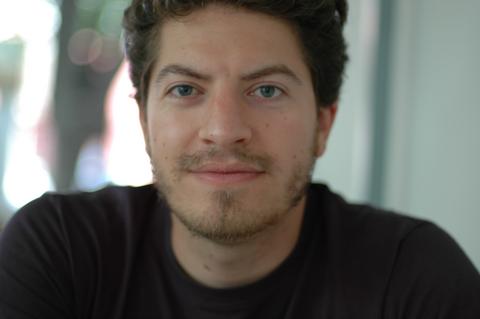Well, I haven’t written a blog entry in a while but with good reason. The last two weeks have been spent trying to get the final projections and business plan ready as we may face a cash crunch starting in July. I also wanted to get most of my important work done before Jessica’s arrival (which is amazingly in less than a week!). I’ve decided to devote this blog entry to a typical day in the work life of Serge in Nicaragua.
Well, it all starts at around 6:45 AM in the morning when my alarm clock rudely awakes me from my somewhat deep slumber. Then, there is the cold shower as we have no hot water. It isn’t that bad when you consider that it averages 30-35 degrees everyday here. I do a bit of exercise, get the coffee running (bought organic coffee from a local farmer on the Isla de Ometepe for a taste of paradise), have my daily ration of cereal and yogurt and if I’m lucky (and remembered to buy some), orange juice. Then, I’m off to grab a taxi off a busy 4 lane road near my house. I usually get a taxi within five minutes of my arrival as many drive by honking and slowly down pointing in various directions. I tend to have better luck with empty taxis but most of the time I share a cab ride with complete strangers. The cost of the taxi ride to the Spanish school varies from 25 to 40 Cordoba (about $1.40 to $2.25) and takes about 10-15 minutes depending on the traffic and the patience of the taxi driver (and whether he stops for gas along the way, a regular occurrence). I usually arrive at school at about 8:05 where I may have to wait until 8:20 for my teacher to arrive. She lives in la Conchia and needs to take a microbus which can take up to one hour and twenty minutes to get to Managua. I have my hour and forty-five minute class and catch another taxi ride which costs me between 30 and 40 Cordoba to get to work. I usually arrive at work between 10:15 and 10:30 AM. I work with Wendy in the conference room. I don’t really have an office but we do have WI-FI internet access which is nice and the conference room is large and air-conditioned which is another nice feature.
A typical day at work involves responding (or sending) numerous e-mails to my Canadian supervisor, Fred Wall. It also involves drafting and asking for advice and information from my Nicaraguan bosses: Veronica, Junior and Octavio. They have offices about 10 metres from the conference room but I usually get faster responses and less headaches in sending a well drafted message in Spanish. I do tend to pop into Veronica’s office three or four times a day for more complex information requests. Over the past 5 weeks, I’ve completed a 2 megabyte file on the 5-year projections for MiCrédito based on tacit knowledge held by the management team on costs, HR hiring practices, projections for branch portfolio growth, market information on the MFI sector and individual cities where we want to open new offices. I’ve also been able to interview all the current branch officers, some clients and association directors for the MFI sector. I’ve been able to accumulate a mountain of information on the competitors, where they are located and what they are doing (and whether they are successful at doing it). I’ve been able to give a convincing answer to banker’s questions on: Why MiCrédito and what makes you different? This is something that we’ve addressed in our Schulich program at various stages but is always difficult to answer without knowing your market, your competitors and your clients. I’ve tried to incorporate as much of the experience, knowledge and ideas of the management team into a business plan while also considering the desires of the board which is not always an easy political task. The final business plan including appendices and footnotes is fast approaching 60 pages but is an easy read and is complete in the assumptions that we’ve made.
This has been my work over the past five weeks. Next week, I plan on starting the second part of my work term objectives which is to facilitate investor and banking relations. Already, Veronica has approached two local commercial banks, one international bank, one local government funding agency making my job much easier. Yet more is needed and long-term banking and investor relationships need to be started at this point in their history to ensure the future capital needs of MiCrédito. The organization is professionally-run with a clear social drive behind the efficient and profitable operations. It is a living example of working within a double bottom line paradigm. It is successful at recruiting like-minded people and in convincing bankers and financiers that its plans are genuine, realistic and passionate. It has been a busy five weeks but I’m hoping that the time invested in preparing the business plan and five-year projections will pay off by attracting excellent partners to the business over the coming eight weeks.
And that my friend (if you aren’t already sleeping or on another website) is a day in the life of Serge in Nicaragua.
Saturday, June 9, 2007
Subscribe to:
Posts (Atom)
